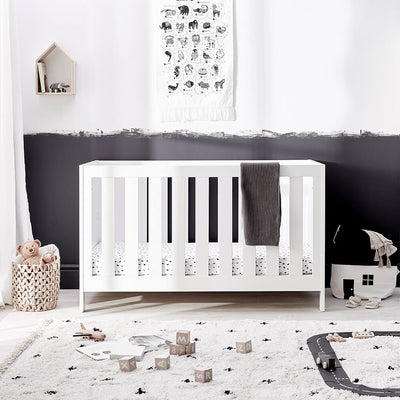Could you imagine life without your pushchair?
Quick Summary: The idea of carrying your child, or children everywhere is not an appealing proposition, especially if they are late to walk. Pushchairs have only really become a vital part of the 'baby kit' in the last 300 years, now occasionally chosen pre-conception, such is their necessity!
We are taking a trip back in time to see how the transportation of our children has changed through the ages.
Before the 1700s you would have been carrying your baby everywhere in a sling or on the hip. Even when the pushchair was invented, it was more of a pull-chair in the form of a mini horse-drawn carriage, pulled along by a pony, a dog, a goat or even a servant – they were predominantly a plaything for wealthy parents.
In 1733 a man called William Kent, a renowned garden architect, was commissioned by the Duke of Devonshire to design a means of transport to amuse his children. He came up with a carriage that consisted of a wicker basket on wheels that was ornately decorated in accordance to the Duke’s status.
As it was illegal to use 4-wheeled vehicles on footpaths, early prams only had 2 or 3 wheels, these were known as ‘Mailcarts’ and ‘Victorias’. They were designed for older children that could sit up, they were uncomfortable, unstable and dangerous. Around 1870 cradles began to be fitted onto 4 wheels and so the law was circumvented and by 1875 it was finally abolished.
In 1848, an American, Charles Burton, adapted the wheeled baby carriage to include handles, allowing it to be pushed rather than pulled, making it a safer, more practical means of transport for your children.

Among the aristocracy, his baby carriage became an extravagant ‘must have’ toy. Queen Victoria bought three baby carriages from Hitchings Baby store in Ludgate Hill, London, a century after the Duke of Devonshire’s folly, thus making it de rigueur to have your child wheeled rather than carried by your nanny.

Around the same time, engineer and inventor, William Wilson started his own business in Silver Cross Street in Hunslet, Leeds. In 1877 he produced his first perambulator which included a reversible hood and a unique suspension system.
Such was his success that by 1897 he opened a purpose-built factory that was sadly flattened as a result of a fire. Undeterred he rebuilt, calling his phoenix from the flames the ‘Silver Cross Works’.
Meanwhile, in America in 1889, a man called William Richardson patented the world’s first reversible perambulator, where the bed could be rotated. He also re-engineered the axles to allow each wheel to spin independently making cornering infinitely easier.
In 1913, the father of , William Wilson died, leaving his empire to his three sons, James, Irwin and Alfred. By the 20s, Silver Cross became synonymous with the perambulator and the Wilson Brothers supplied a Silver Cross baby carriage to George VI and Queen Elizabeth upon the birth of Queen Elizabeth II.

Between the world wars safety came to the fore when improvements such as footbrakes, larger wheels and deeper prams started to appear. During the second world war, the Silver Cross factory was requisitioned by the Air Ministry to produce parts for aeroplanes such as the Hurricane and the Spitfire. Having learned new skills and techniques during the war, the brand moved forward into making prams lighter, fabricating them in aluminium instead of plywood and the production process much faster, installing conveyor stoves and spot welding machines.

When Prince Charles was born in 1948, it was no surprise that the Queen stuck with tradition and chose a pram, by then they had a worldwide reputation for their high-quality products,
In the 50s, Silver Cross adapted their designs for the era, continuing to make their models lighter, more attractive and more ‘user friendly’. Materials like chrome, rubber and plastic made production cheaper so that everyone, not just the rich, could afford one.
Even though they were now affordable, prams were bulky and cumbersome. In 1965, Owen Maclaren, an aeronautical engineer from London, designed a solution for his daughter, who struggled with the size of her pram when travelling. Realizing that she needed something compact and lightweight, he used his knowledge of aeroplane manifolds to build his daughter the very first baby buggy.
His ground-breaking design changed the face of the pram industry it meant that children of all ages could sit properly instead of lying down or being awkwardly propped up in a mobile bed. He devised a lightweight aluminium frame that could fold down into a compact size – the umbrella fold.

Since that time, high-performance, lightweight plastics and alloys have allowed for more and more advanced pushchair designs, with a whole range of useful features such as cup holders, parent trays, reclining seats, and toddler boards.
Developments in the transportation of children have changed with the times. With the desire to get back into shape after a baby, or simply to allow life to go on as it did before, the jogging stroller came about to allow parents ultimate freedom. In 1983 Phil Baechler invented a pushchair with pneumatic tires and big wheels that allowed him to pursue his hobby -running, without having to leave his newborn son at home.
Today, with more technology being incorporated into pushchairs we have seen a variety of progressions such as battery-powered pushchairs, iPod/phone charging pushchairs, headlights, fitness calculators, and the list goes on…I feel sure we have not reached the end and that as technology becomes ever more nano, who knows what will be built into the pushchairs of the future.


